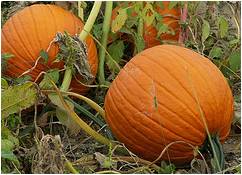This blog is part of a series about permaculture, drawing on experiences in a Permaculture Design Course I am taking with Chop Wood Carry Water Permaculture in Nottingham, NH.
“We must stop expecting the earth to produce more, but start doing more with what the earth produces.”
– GUNTER PAULI, Upsizing: The Road to Zero Emissions
I just returned from a trip to the dump where I unloaded bags of garbage and plastic, glass, metal, and paper for recycling. I suppose I could feel positive that I had three times more bags for recycling than bags for the trash and all our food waste had already gone into compost for the garden. However, when I think of all these pounds of unusable material from just one household, multiplied by billions of people, this waste makes no sense. “Produce no waste” is a principle of permaculture, meaning we capture as much value as we can from each resource nature provides.
This principle was taught in a memorable way in my permaculture class in a simple five minute demonstration by our teacher, Lauren Chase-Rowell. The class is held at Lauren’s farm and we gathered in the kitchen of her old colonial home. Lauren brought out a pumpkin that she had recently harvested from her garden and placed it in a wide metal bowl. She rinsed the  pumpkin and collected the water in the bowl as she explained, “I can capture all the microorganisms on the outside of the pumpkin and flecks of soil, rather than have them and the water go down the drain unused.” She then poured the water onto her houseplants.
pumpkin and collected the water in the bowl as she explained, “I can capture all the microorganisms on the outside of the pumpkin and flecks of soil, rather than have them and the water go down the drain unused.” She then poured the water onto her houseplants.
Next, she cut the stem and end off the pumpkin, explaining these would go into compost to return to the garden soil. Slicing the pumpkin in half, she carved out the seeds and separated them from the pulp. The seeds she planned to roast and then like a TV cooking show, she passed around roasted seeds previously cooked for us all to sample. The pulp will be boiled in water to make a soup stock, capturing these nutrients. She showed us a glass jar of amber-colored stock. Once cooked, the pulp went into a bucket near the sink which includes other food scraps for her chickens. She skins the pumpkin and those scraps go to worms, another kind of compost that she uses to nourish her house plants. She chops the pumpkin, which will then be cooked, and put in the soup we would eat for lunch. By the end of the demonstration, no waste was left from the pumpkin – this one pumpkin had nourished houseplants, the land/garden, chickens, worms, and people.
According to Gunter Pauli “Less than 5% of agroforestry output is effectively used, with, on average, some 95% discarded. If we adopted an economic system that used this 95% – even 100%- we would be able to satisfy as much as 20 times more material needs without expecting the earth to produce more.”
